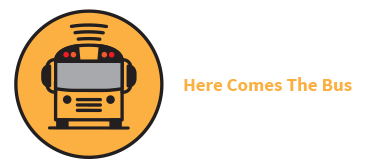For millions of children across the US, school bus drivers are the first adult they see at the start of their school day, and the last they see before returning home each afternoon.
As they de-board the bus, most of these children are met by a loving caregiver, or walk home to their safe and cozy home.
For some, however, school and the school bus are the only safe places they know.
Human trafficking is a global problem in which people are illegally bought and sold for forced labor or commercial sex.
It’s also a local problem, with cases reported each year in all 50 states, including thousands of child victims. We know that these children often continue attending school while being exploited behind the scenes, perhaps by a trusted family member at home.
In fact, according to the Counter Trafficking Data Collective, nearly half of child trafficking cases begin with some family member involvement. We also know that traffickers recruit victims out of schools, and target young people via online platforms including social media and virtual games.
All of this means that schools, and school transportation, can play an important role in preventing and interrupting child trafficking.
Liz Williamson, survivor leader and Training Specialist for Truckers Against Trafficking (TAT), notes: “I was trafficked by my family from ages 6 to 18. School was my reprieve from what was happening at home. Imagine if my school bus driver, who saw me every morning and afternoon for all of those years, had been trained to recognize the signs of what was going on?”
This is exactly why Busing on the Lookout (BOTL), TAT’s bus industry program, is on a mission to get every school bus professional across North America educated and equipped to combat human trafficking in their everyday jobs.
School bus drivers are already keenly aware of changes in their students’ routines, moods or physical appearance, and focused on the safety of the students they transport. They can notice red flags or patterns that are out of the norm, including if new or different people are waiting to pick up a student at the bus stop.
If every school transportation professional could be trained to identify the signs of human trafficking and how to report it effectively, imagine the potential impact!
January is National Human Trafficking Awareness Month, and an opportunity for every individual to learn more about this issue and play a part in combating it. Here are a few ideas for how you can join the movement:
- School transportation professionals: Be on the lookout for human trafficking and know how to report it. BOTL’s online training takes less than an hour to complete. Transportation supervisors and trainers can also request BOTL’s free, industry-specific materials for in-person training. To date, school transportation partners in 36 states have implemented BOTL training.
- School administrators: Create specific protocols and policies for school personnel to follow when the sex trafficking of minors is suspected or disclosed. Existing policies and protocols for addressing other forms of child abuse can serve as a guide, but other agencies such as law enforcement and child welfare should also be consulted.
- Parents and caregivers: Learn more about any anti-trafficking initiatives in place at your children’s schools. Consider introducing the BOTL curriculum to your school leaders. And, in these times of at-home learning, make online safety a priority for your family.
Human traffickers are counting on people not paying attention and not knowing the signs to look for or the questions to ask.
Understanding this crime and the ways we can confront it is one more way to play a role in keeping children in our communities safe.
